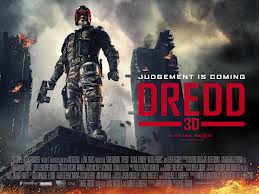3D provokes a lot of debate, more so than other changes in cinema format. Digital takes over from film and few notice. IMAX films and cinemas become more common and there is little complaint. 48 frames per second arrives and we ask “What does that mean?” 3D however is a cause of constant debate, as some praise the format, others criticise it, and others shrug and say “So what?” Critics and filmmakers have objected to the format, saying it adds nothing and no one really likes it.
I’ve gone through all three of these reactions. When Avatar came out in 2009, I was hugely excited and thought the 3D element of that film was a wonderful, integral part of its meaning. Since then I was pleased with other 3D films, especially Hugo and, to a lesser extent, Tintin and the Secret of the Unicorn, Prometheus and some of the retro-fitted offerings like Thor and John Carter. Then 3D became just another feature and while it was OK to see it, it did not seem that important. When The Avengers came out, I opted for 2D simply because the timing was more convenient. The Amazing Spider-Man was, sadly, far from amazing in three dimensions, and I recalled Sam Raimi’s 2D Spider-Man films being far more dynamic than Marc Webb’s.
This year though, 3D started to hurt in that most important of places, the wallet. Cinema tickets are expensive enough, but 3D can add more than £2 on top of the original price. Furthermore, cinema prices in general increased towards the end of the year, and the increase in 2D prices may be to aid the expansion of 3D, so even those of us who don’t see 3D are paying for it. To be annoyed by this is understandable, and as a result, I haven’t seen a 3D film since The Amazing Spider-Man, as I don’t think it’s worth the money. This meant I missed out on some releases, the most notable among them Dredd, or Dredd 3D as it was advertised. With the majority of screenings being in 3D, I could not find a 2D screening at a suitable time, and not being prepared to pay extra for 3D, missed the film altogether. I would not be surprised if this was a common experience, and other cinema-goers may have avoided or neglected Dredd 3D specifically because of the third dimension, either due to price or just a preference for 2D. It is notable that Dredd was a box office flop, kyboshing fans’ hopes for a sequel.
What makes a predominantly 3D cinema release especially contradictory is that any distributor needs one eye on the home release. While 3D Blu-Rays and televisions do exist, the majority of home purchase will still be in 2D, so the 3D is largely wasted. Cynically, this may have been the plan of distributors Lionsgate: Dredd’s predominantly 3D theatrical release was intended to maximise ticket sales, and served as a promotion for the DVD release. Distributors make far more from DVD sales than box office take, so the poor theatrical takings of Dredd may not be a concern as DVD sales will cover the loss. Like earlier releases The Shawshank Redemption, Donnie Darko and Hard Rain, Dredd may enjoy a second life on home release, but crucially this is (primarily) without the third dimension. Is the primarily 3D release to blame for Dredd’s box office failure? Perhaps. It could equally be credited to the restrictive certificate, 18 in the UK and R in the US, so family audiences who flocked to The Avengers and The Dark Knight Rises did not see it. Or perhaps those who saw The Raid thought it unlikely the similarly premised Dredd would measure up, and indeed comparisons between the two generally put Gareth Evans’ surprise hit ahead of Pete Travis’ comic book adaptation. It is perhaps worth noting that two of the year’s highest box earners, The Dark Knight Rises and Skyfall, were only screened in 2D, although the year’s highest earner, The Avengers, had 3D and 2D screenings, so who knows?





